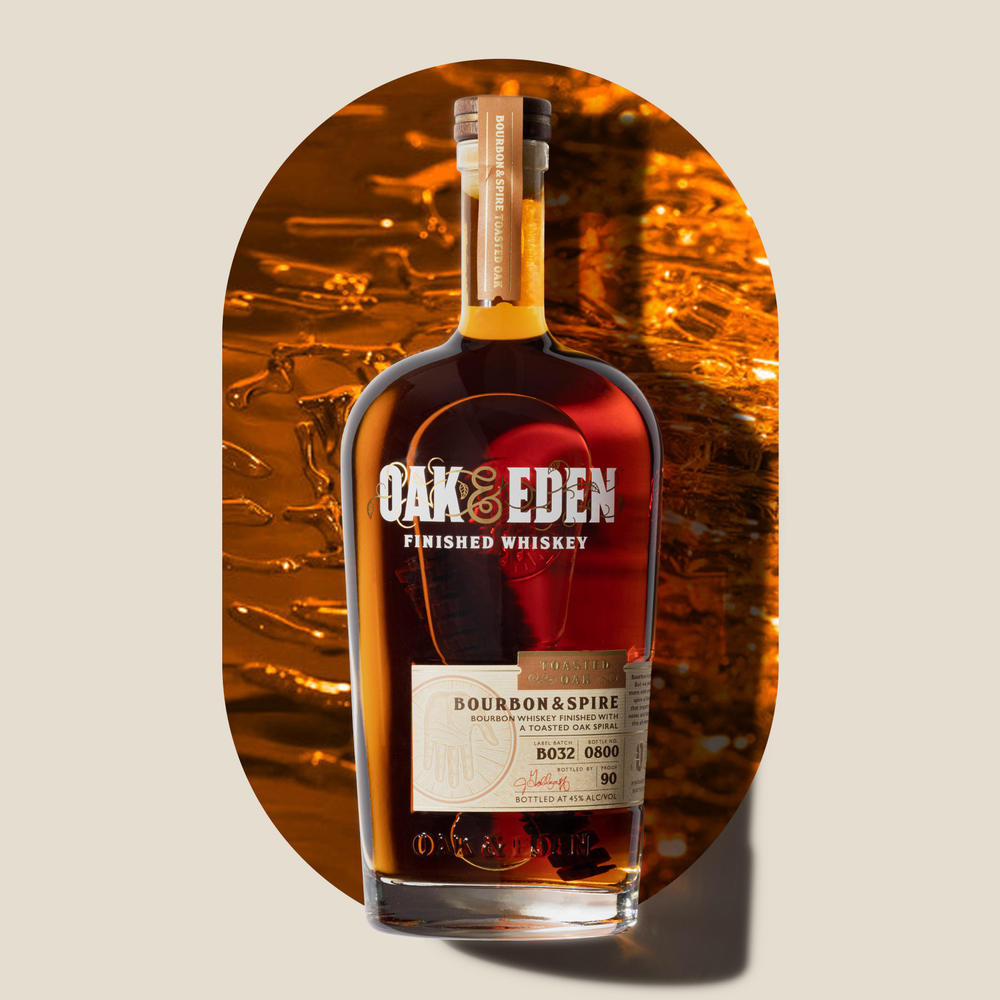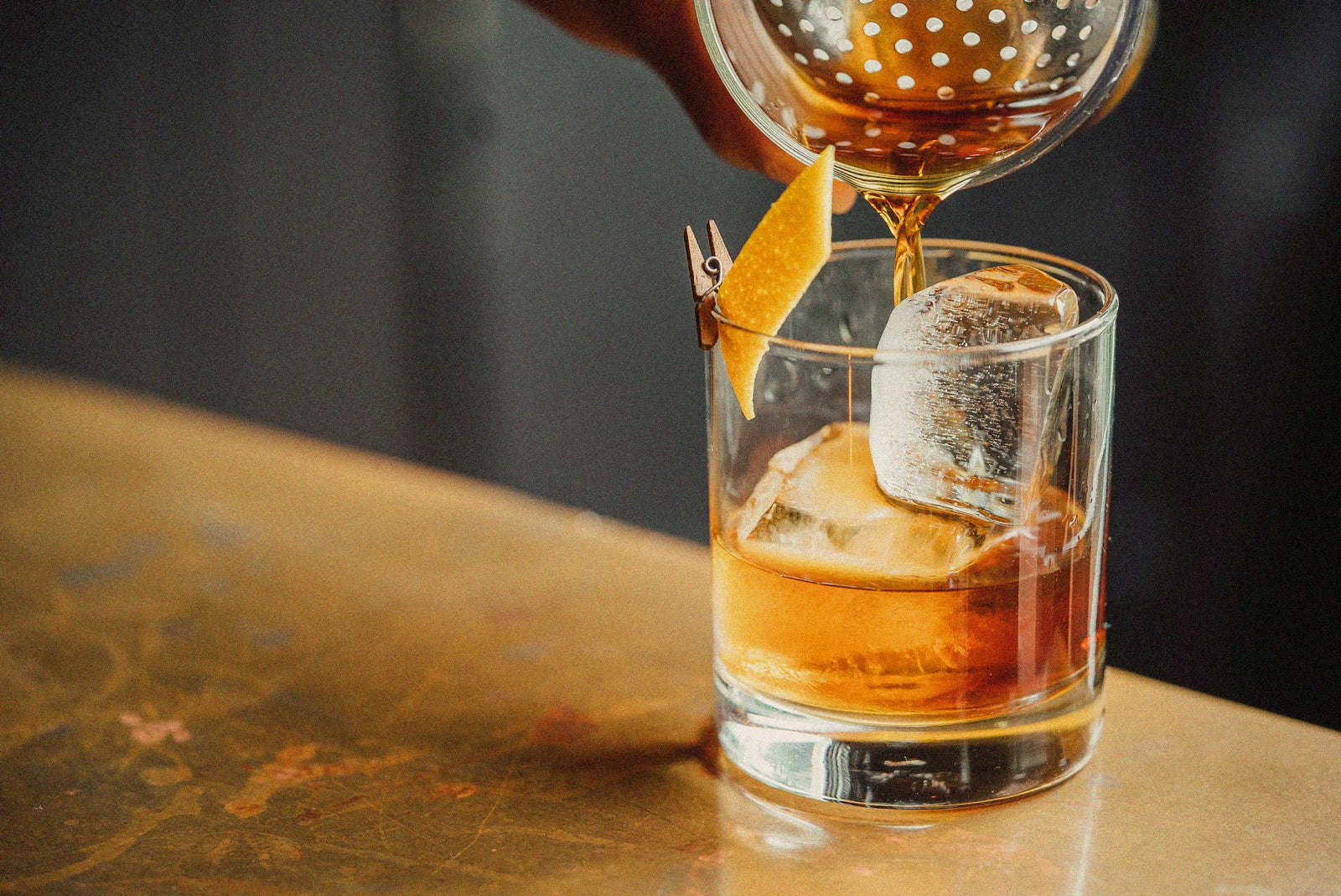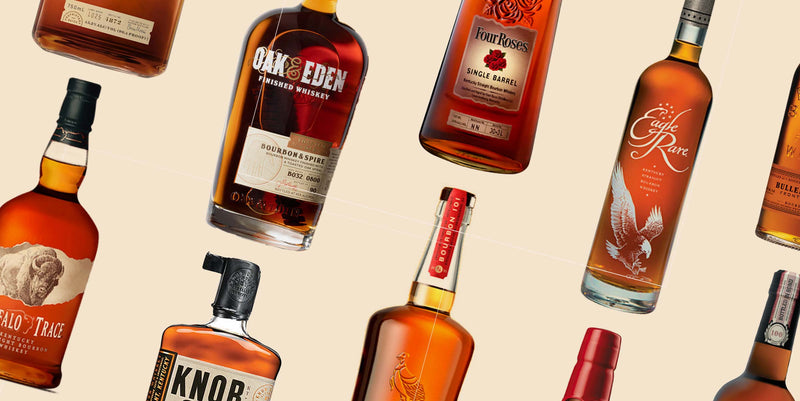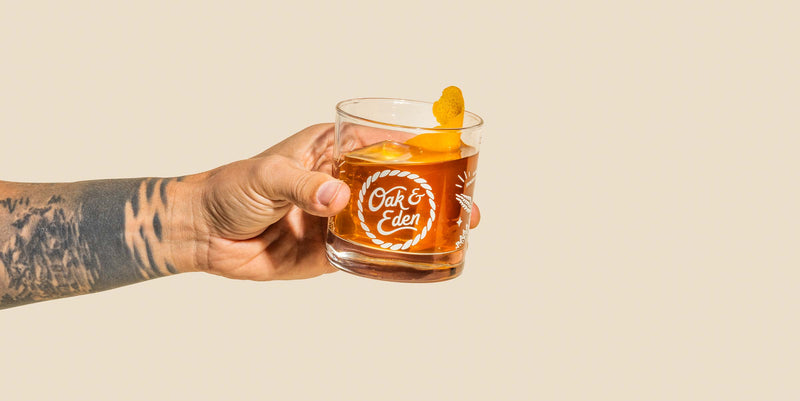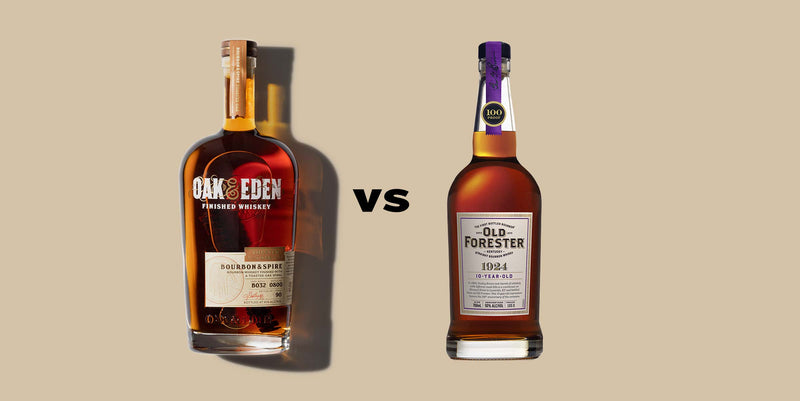There are many different ways to enjoy a great whiskey. We have an entire collection of great recipe ideas for delicious whiskey-based cocktails that taste great with our Oak & Eden whiskies. You can check out a few of our favorites like the Sazerac and West of Eden here.
However, drinking whiskey in a cocktail is not your only option. As any whiskey lover will tell you, really great whiskey shines clearest when it is served straight up. But even here, you have the option of ordering your whiskey "on the rocks".
But what does "on the rocks" really mean? Here is a look at what "on the rocks" means when you are ordering at the bar, and how drinking whiskey on the rocks informs the experience. Let's get into it!
What Is Whiskey on the Rocks?
While the phrase "on the rocks" is used frequently at the bar and in popular culture, it means one very simple thing — with ice. The "rocks" are just cubes of ice.
This is as opposed to another phrase that you have probably heard before: "neat". When you order a whiskey "neat", what you are ordering is a glass of whiskey with no ice and no mixers. This makes sense when you think about it; your whiskey is served "neat" without anything else to dirty it up.
The final ordering phrase you should get familiar with so that you can order at the bar like a pro is "straight-up". If you want your drink served "straight-up" you want it chilled, but you don't want any ice in the drink. You might order a martini, for instance, neat.
Here's a fun last one for you: "with a twist" can be added at the end of any drink order to ask for a lemon twist in your drink as a garnish.
Can Cocktails Be Served on the Rocks?
Yes! Any drink that you order at the bar can be ordered on the rocks to ensure that there will be ice in your cup. You can order whiskey, or any other hard liquor, "on the rocks", as well as any cocktail.
Keep in mind, however, that some cocktails are meant to be served with ice and others are not. If you don't want to look like a confused 21-year-old at the bar, make sure you aren't ordering a drink on the rocks that no one would drink on the rocks — like a martini.
Does Ice Change the Way Whiskey Tastes?
By this point you're probably asking yourself if there is a difference between whiskey served neat versus on the rocks, and if one is superior to the other. Well, the answers might surprise you.
Having a whiskey on the rocks versus neat will provide you with a different experience, and help you identify different flavor notes, aromas, and hints that the distiller worked hard to infuse into your whiskey.
This is for two reasons, the first being temperature.
How Temperature Affects the Flavor of Whiskey
We have already written extensively on how temperature affects the flavor and shelf life of whiskey while it is in storage. If you want to read more about how to store your whiskey effectively to preserve its flavor you can check out our articles on the topic here in our Journal.
But here we're going to talk about temperature in relation to whiskey that is poured for drinking. The temperature of the liquor when it touches your tongue absolutely changes and alters the flavors that you are going to get.
The ideal temperature for whiskey to be drunk at is about room temperature, between 60 and 65 degrees Fahrenheit. This is also the ideal long-term storage temperature for whiskey, so usually, you will get the most expressive flavor from whiskey at room temperature.
Serving your whiskey on the rocks is going to chill the liquid down quite significantly, which will give you a subtler, less aggressive flavor. This can be a shame for some connoisseurs who want to get every flavor note from a whiskey, but for people looking to acclimate to the flavors of whiskey, this can be a great way to adjust to the flavors.
But temperature isn't the only way that drinking whiskey on the rocks impacts the flavor, there is also the process of dilution.
How Dilution Affects Whiskey
The other way that serving your whiskey on the rocks impacts the flavor is by dilution. Dilution is making a liquid weaker, or less concentrated, typically by adding water. When you serve your whiskey on the rocks, as the ice in your glass melts, it will combine with the whiskey, giving you a less strong glass of alcohol.
Most people think that the more alcohol in their whiskey, the better. However, there is such a thing as too much alcohol, and it can actually impact the flavor of the whiskey. When whiskey is diluted, the alcohol content is lowered, which can make it smoother and more palatable.
The downside is that dilution can also make the flavor less intense. For some aficionados, this is a good thing, as it allows them to enjoy the subtle flavors of the whiskey. Others prefer a more full-bodied flavor and find that dilution just waters down their experience.
Ultimately, it's up to you to decide whether or not you want dilution in your whiskey. If you're looking for a more mellow flavor, then go for it. If you want something with a little more kick, then you might want to stick with a higher-proof whiskey.
How To Taste Whiskey Properly
If you are ordering your whiskey neat or on the rocks, then you are likely tasting your whiskey, not drinking it, and there is a difference. When you are drinking whiskey, you are trying to get the liquid down. But when you are tasting a whiskey, you are focusing very closely on the entire sensory experience of a particular whiskey (aroma, color, texture, and flavor notes).
In order to taste a whiskey to the fullest, you have to take an organized approach that allows you to identify all the senses a whiskey exposes you to. Here is a brief guide to help you taste your whiskey to the fullest, whether you prefer it on the rocks, straight up, or neat.
Step One: Observe
The first hint you have about a whiskey's flavor profile is going to be the appearance of the whiskey. What color is your whiskey? Is it light or dark? This can give you a clue as to how long it has been aged. The longer it has been aged, the darker it will be.
The longer a whiskey is aged, the more woody flavors you should expect from the whiskey. In a clearer whiskey, you may have more flavor notes from the mash bill present, showing off the flavors of the grains.
Step Two: Sniff
Now you should give your whiskey a sniff and enjoy the aromas that the whiskey is giving off. Unlike when you are tasting wine, you should not swirl the whiskey in your glass before sniffing. This is because the swirling helps to release the flavor compounds in a drink, but also releases the alcohol vapors.
While in a wine, the added aromatics from swirling are helpful and the alcohol vapor is not too overwhelming, because of the higher alcohol content in whiskey, swirling will release an unpleasant amount of alcohol vapor.
Rather than swirling, simply take the glass near to your nose, gently take a deep breath through your nose, and see what aromas you can pick up. Is it woody? Fruity? Spicy? These aromas will give you an idea of the flavor profile of the whiskey.
Step 3: Take a Sip
Take a sip and let it linger on your tongue. Pay attention to the texture and the taste. Is it smooth or harsh? Sweet or smoky? Do you taste caramel? Or maybe vanilla?
Pay attention to everything you taste in your whiskey, and try to make connections with how other foods and drinks taste to identify interesting notes.
Step 4: Dilute Your Whiskey
The final step to a whiskey tasting is an optional one but one that most whiskey tasters choose to make. By purposefully diluting your whiskey with a few drops of water, you may be able to identify notes that were previously hidden from your palate.
If you are tasting at a distillery, oftentimes they will provide a dropper bottle with distilled water for this purpose. However, if you are tasting at home, you may find that putting an ice cube in your drink and letting it melt is the best way to dilute it for a tasting.
By taking the time to really observe your whiskey, you'll be able to appreciate all that goes into making this delicious spirit.
Is Whiskey Supposed To Be Ordered on the Rocks?
There are many ways to enjoy whiskey, and there is no one right way to drink it. Whether you prefer your whiskey neat, on the rocks, or in a cocktail, the important thing is that you enjoy it.
Whiskey can be served neat, which means it is poured into a glass with no ice. This is the best way to experience the flavor of the whiskey, as ice can dilute the taste.
Whiskey can also be served on the rocks, which means it is poured over ice. This is a popular way to drink whiskey, as it helps to mellow out the flavor.
If you want something more festive, you can make a whiskey cocktail. There are many delicious recipes to choose from, so you can find one that suits your taste. Whether you like your whiskey sweet or sour, there is a cocktail that will be perfect for you.
On the Rocks: Takeaway
There is no one right way to drink whiskey. Whether you prefer it neat, on the rocks, or in a cocktail, the important thing is that you enjoy it. Whichever way you choose to drink it, be sure to take the time to appreciate the flavor of the whiskey.
On the rocks simply means served with ice. Your alternatives are served neat (without ice) or straight up (chilled, but still without ice). There is no shame in ordering your whiskey exactly how you like to drink it.
If you're looking for a new whiskey to add to your collection, consider our offerings at Oak & Eden. All of our whiskies use our special in-bottle finishing technique, which helps layer flavors and complexity into the drink while it rests in the bottle.
Give it a try today, and enjoy it neat, straight up, or on the rocks.
Sources
Dilution of whisky – the molecular perspective | Scientific Reports
Should Whiskey Be Chilled or Drunk Straight? (2022 Updated) | Liquor Laboratory

